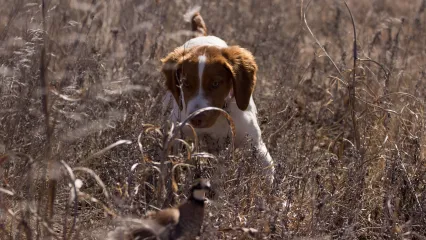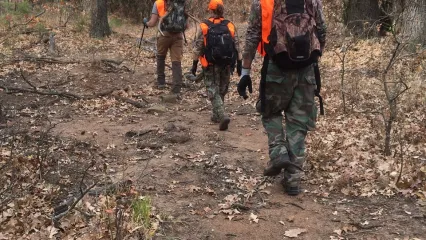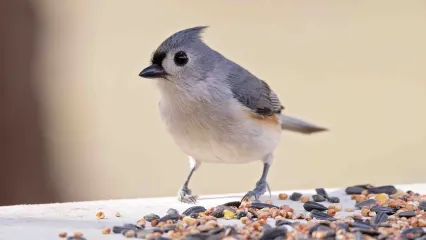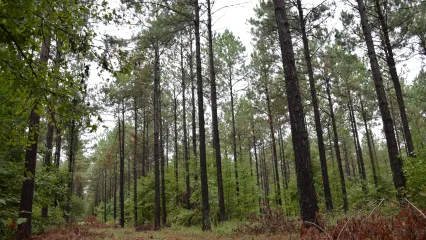Attention Non-Residents
The Oklahoma Wildlife Conservation Commission adopted new rules in 2025 that require non-residents accessing certain Oklahoma public hunting and fishing areas to check in and out of the area. By checking in and out of these areas, hunters, anglers, shooters, birdwatchers, hikers and any other users can help the Wildlife Department better understand how the area is being used. There is no additional cost associated with checking in or out of an area. There is no limit to the number of check ins for an individual in a year.

Contacts
Area Details
Waurika WMA covers 10,580 acres in Cotton and Stephens counties in southern Oklahoma and is located west of Comanche on Hwy. 53. The area mostly encompasses the floodplains of primary creeks feeding Waurika Lake and the adjacent uplands. The bottomlands are primarily American elm, hackberry, burr oak, cottonwood and willow. Uplands are vegetated by typical tall and mid grass species, with sandplum and other shrubs present. Some portions of the area are rather narrow strips of land between the lake and private land. 440 acres of wetland units are located south of Hwy 53, adjacent to Big and Little Beaver creeks, and on Walker Creek. The annual rainfall for the area is 30 to 32 inches.
From Comanche: 11 miles west on State Hwy 53 (from the intersection with U.S. Hwy 81). The WMA is located on both sides of the Highway, mainly to the south of this point
- Quail: Bobwhite quail are present in fair numbers on upland sites.
- Deer: White-tailed deer are present in good numbers.
- Turkey: Rio Grande turkeys are present in fair number.
- Rabbit: Both cottontails and jackrabbits are present in good numbers with cottontails more common.
- Furbearers: Coyote, bobcat and raccoon are available.
- Dove: Dove are present in fair numbers, primarily on managed fields.
- Waterfowl: Geese and ducks are usually present in good numbers during the annual migration.
- Shorebirds: Frequent wetland units and lake shore during fall and spring migrations.
Approximately 400 acres of wildlife feeding areas are planted annually, including 250 acres through an agriculture lease program. Wetland units are intensively managed with both agricultural plantings and native wetland plant enhancement. Trees are planted to provide woody cover on WMA.
One designated primitive camping area is located on the area. Camping with hookups is available on Corps of Engineers managed areas on the south end of Waurika Lake, (580) 963-2111.
Waurika Lake offers a variety of fishing opportunities for hybrid striped bass, black bass, crappie and catfish species.
CLOSED TO ALL HOG HUNTING.
All shotgun hunting is restricted to federally approved nontoxic shot on both Beaver Creek and Walker Creek WDU portions.
Closed Seasons
Same As Statewide Seasons
Seasons w/ Special Restrictions
- Youth Deer Gun
Antlerless only.
- Pursuit with Hounds for Furbearers, Predator/Furbearer Calling
Closed during the first nine days of deer gun season.
- Duck, Merganser and Coot
Hunting hours for waterfowl close at 1 p.m. daily on the WDU portions.
- Trapping
Open to water sets, live box traps and enclosed trigger traps only through Jan 31. Open same as statewide Feb 1 through end of February.
- Turkey Spring, Youth Turkey Spring
One-tom limit; seasons combined, area combined. Hunting hours close at 7:00 p.m. daily.
- Quail
Closed during the first nine days of deer gun season. Hunting hours close at 4:30 p.m. daily. Closed to non-resident hunting February 1-15.
Hunter and angler camping is allowed in designated areas.
Closed to all air-driven watercraft on WDU portions.
Duncan Convention and Tourism
1-800-782-7167
Great Plains Country
114 South 9th St, Suite A Frederick OK 73542
580-335-5999
gpc@greatplainscountry.com
www.greatplainscountry.com
Oklahoma Tourism and Recreation Department
Post Office Box 52002
Oklahoma City, OK 73152-2002
(800) 652-6552 or (405) 521-2409
www.travelok.com
Waurika Chamber of Commerce
120 W Broadway
Waurika OK 73573
chamber1@waurika.net
Apprentice Designation: A Learner's Permit for Hunting
Hunter education has greatly reduced hunting accidents, but if you can’t complete a course right away, the apprentice designation allows you to hunt under supervision. It works like a learner’s permit, giving you the chance to gain real experience safely until you finish hunter education.
Exploring the New Herron Family WMA
The new Herron Family WMA is more than 17,000 acres of hunting land, it is also adventure, access, conservation, and tradition. Thanks to a unique partnership, Oklahoma residents now have a new place to chase deer, call turkeys, hear quail, and pass on the outdoors to the next generation.


